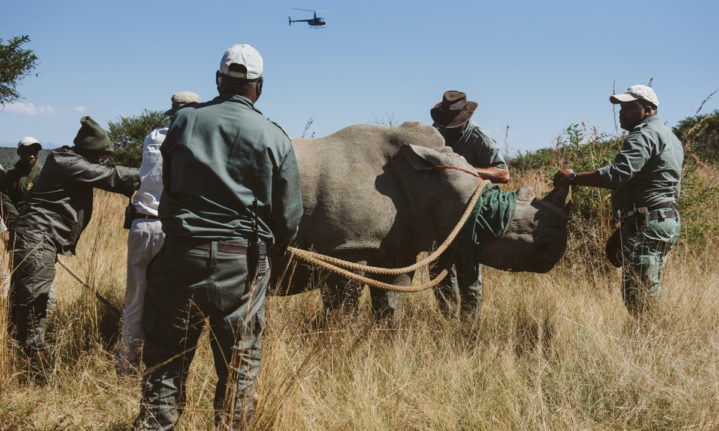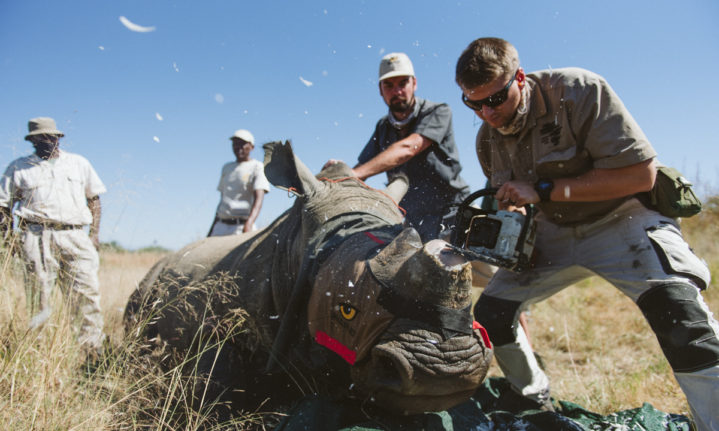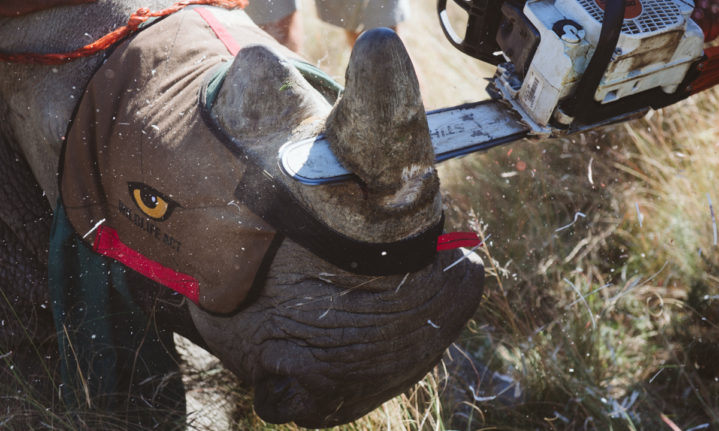Last week, Ezemvelo KZN Wildlife, in an operation funded and supported by conservation NGO Wildlife ACT, set out to dehorn the entire population of white rhino on Spioenkop Nature Reserve in KwaZulu-Natal.
A large number of white rhino were dehorned over three days, making it one of the biggest rhino dehorning operations in the province.

The dehorning of rhino populations has been adopted as an effective tool in the fight to save the species from increasing poaching threats. Although not a solution on its own, dehorning has proven effective when used in small populations and in conjunction with a number of other initiatives, including strong law enforcement.
“The chances of a rhino being poached is drastically reduced once the animal has been dehorned. The threat will always be there, but this is one way we can deter that threat. In order to be effective, it is important that the entire population is dehorned, thereby reducing the incentives for poachers to consider Spioenkop as a target,” said Eric Mlaba, Officer in Charge, Spioenkop Nature Reserve.
The Ezemvelo Game Capture team, with the support of Wildlife ACT, worked to successfully dart and dehorn the entire rhino population over the three-day operation. The team also notched the ears of several young rhino that were dehorned for the first time. Notching allows for individual rhino to be easily identified by monitoring and field ranger teams in the reserve, thus ensuring effective management of the population.
Dehorning rhino is a large-scale operation involving experienced ground teams, wildlife veterinarians and highly skilled helicopter pilots who are able to ‘maneuver’ these animals into areas that are easily accessible for the teams. The team on the ground work swiftly to remove the horn while the animal is sedated. DNA samples are taken for the national rhino database, the drug is reversed and the team moves off to watch from a distance as the animal wakes and walks off. The operation needs to be carried out swiftly and efficiently, reducing stress and associated risk to the animals.

“It is a bittersweet feeling after an initiative such as this – the accomplishment of a highly successful operation, tainted by the unfortunate need to have to undertake such an invasive process due to the unnecessary demand for this animals’ keratinous horn. We hope, however, that this is only an interim measure to safeguard populations such as these while work is continued in the education and demand reduction space,” said Mark Gerrard, Wildlife ACT Managing Director.
Both black and white rhino populations in the region continue to face pressure from poaching syndicates who look to trade their horn to consumers primarily in Asian markets. As rhino numbers across the country continue to decline, conservation efforts focus on proactive approaches to stop poachers before rhino are killed. Ezemvelo continues to protect some of the country’s key rhino populations in their network of protected areas. Spioenkop is one such nature reserve, home to impressive biodiversity and set with a dramatic backdrop of the Drakensberg mountains. The reserve is, however, in need of additional resources to ensure it reaches its full potential.

“Funding is desperately needed in order to make operations like this more frequent. A rhino’s horn grows back, which means that these rhino that we have just dehorned will all need to be dehorned again in 18 months to 2 years’ time. We are hugely appreciative of the contribution from Wildlife ACT, without whose support this work would not have been possible,” Mlaba added.
“Partnerships are crucial to enable long term success in the conservation sector and Wildlife ACT is pleased to be able to provide assistance to Ezemvelo to enable their conservation efforts. Sincere thanks to the Rhino Recovery Fund for enabling this operation and, of course, the dedicated conservation teams on the ground,” Gerrard continued.
This operation was carried out and supported by Ezemvelo KZN Wildlife’s Spioenkop and Game Capture teams, Wildlife ACT, the Rhino Recovery Fund, African Wildlife Vets and Heligistix.
Author: Janelle Barnard, Love Africa
Pictures: Casey Pratt, Love Africa Marketing


















